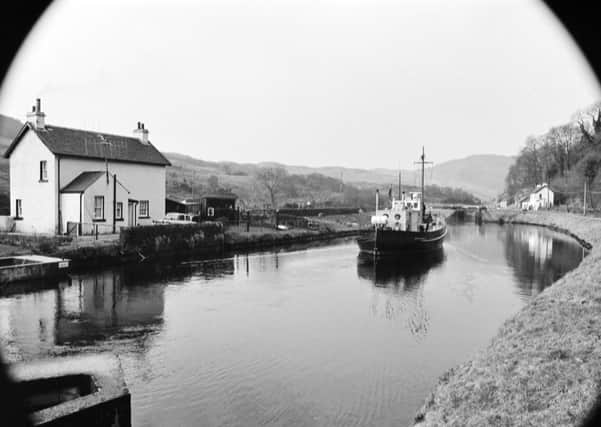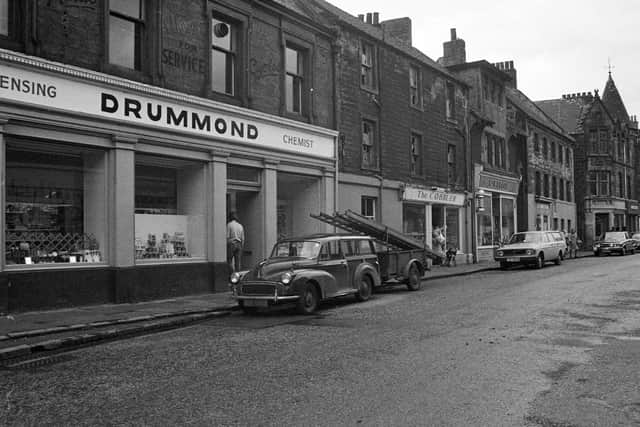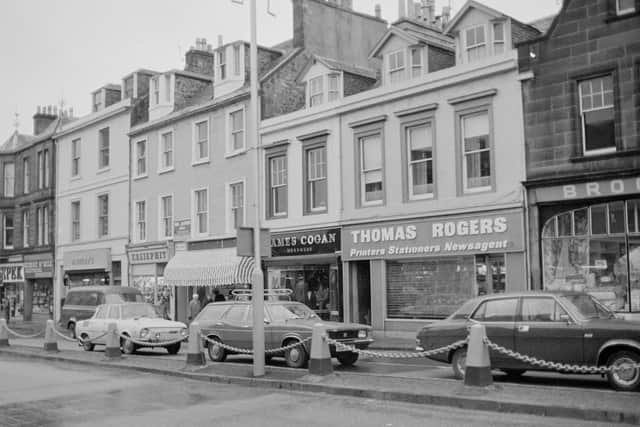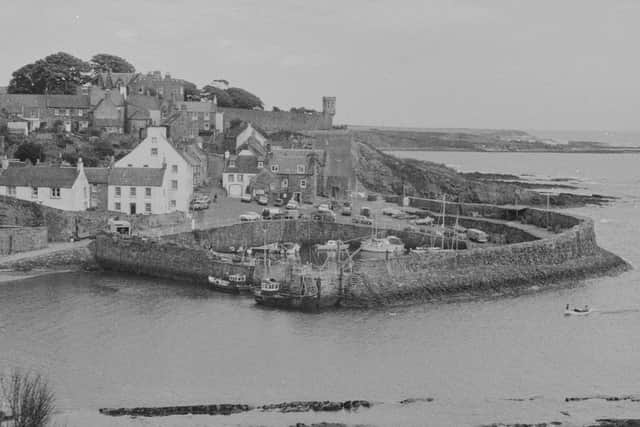Treasure trove of pictures of Scotland in the 1970s and 80s to explore


It’s a snapshot in time, back to the 1970s and 80s, where Historic Environment Scotland’s latest digitised collection takes you.
And there’s around 5000 mysteries to solve for those who fancy a wee puzzle during lockdown!
Advertisement
Hide AdAdvertisement
Hide AdHES is asking the public to help identify archive images now available online for the very first time.


More than 170,000 archive items in HES collections were digitised in 2019-20. The latest collection features some 70,000 photographic negatives and printed photographs from the Scottish Development Department (SDD).
Formed in 1962, the SDD’s principal focus was town and country planning, housing, industrial co-ordination, electrical power, roads, transport, engineering services and local government.
And staff took images on their travels, showcasing rural and urban Scotland in the 1970s and 80s – from crofts in the Highlands to large estates in Fife and tenements in Glasgow.
Advertisement
Hide AdAdvertisement
Hide AdThe collection gives a rare insight into what life was like in Scotland at that time with pub interiors, fashion trends and interior design choices all documented.


There are also extensive records of Glasgow and Edinburgh, as well as Scotland’s new towns.
While 65,000 images had notes detailing where they were taken, more than 5000 locations and building exteriors and interiors are currently unidentified.
However, with the help of the public, HES aims to identify as many as possible.
Advertisement
Hide AdAdvertisement
Hide AdLesley Ferguson, head of archives at HES, said: “SDD staff travelled the length and breadth of the country and, as part of their work, they took images of communities at that time – from industrial buildings to schools, churches and street scenes.


“They are not professional photographs; some are just interesting things they saw as they were passing.
“However, the images provide a snapshot in time when there were far fewer cars on our roads and no satellite dishes on houses.
“Cars were a luxury in the 70s and 80s and cable TV hadn’t even been invented!
Advertisement
Hide AdAdvertisement
Hide Ad“It’s an exciting collection because many people today will recognise the places featured in them. It’s their history; places where they grew up, went on holiday or granny lived.
“History doesn’t have to be something that happened 500 years ago; sometimes the most fascinating collections are from 30, 40 or 50 years ago as people can remember what it looked like then and see the changes.
“We have identified the vast majority of the images, thanks to notes taken by tbe SDD staff at the time.
“However, there’s a rump of about 5000 which we have not been able to place and that’s what we’re asking the public to help us with.
Advertisement
Hide AdAdvertisement
Hide Ad“It’s a great way to escape just now but people will also be contributing to a national collection by identifying material that others can research in our archive in the future and that’s pretty satisfying too.”
Having worked with archive material for many years, solving mysteries is a part of the job Lesley clearly very much loves.
She has her own personal favourites in the collection but there are a few images which are niggling her too!
“I live in the Borders so seeing some of the views of rural Scotland, old buildings and street scenes were the most interesting for me as they reminded me of my childhood,” she said.
Advertisement
Hide AdAdvertisement
Hide Ad“Old advertisements on the side of vehicles also transport you back in time.
“There are a couple niggling me but I can’t quite visualise where they are.
“There’s a school I know I’ve driven by and a farm steading with a doocot above the entrance I can’t place – but that’s the joy of a project like this, discovering where they all are! It’s fascinating.”
All of the images have now been added to Canmore – the online catalogue of HES archives – giving people across the country and the world the chance to explore a very different Scotland.
Advertisement
Hide AdAdvertisement
Hide AdBut it’s the unidentified gallery Lesley wants readers to focus on just now.
She added: “There are about 25 to 30 images but the gallery changes every day.
“Images are replaced when people tell us that’s the school they used to go to or their local high street.
“It would take us a long time to identify all of the images which is why we’re asking the public to help.
Advertisement
Hide AdAdvertisement
Hide Ad“Some will be harder to trace than others; there are thatched cottages with nothing round them in terms of landscape to place them.
“They might present a bit of a challenge but that’s where local knowledge will be invaluable.
“We’re hoping your readers will enjoy helping us piece the puzzle together.”
Prints relating to significant archaeological digs have also been digitised, along with 14,000 prints from research and work by prominent archaeologists such as Dr Euan Mackie, Roger Mercer and Vere Gordon Childe, with the oldest dating from 1927.
Advertisement
Hide AdAdvertisement
Hide AdVisit canmore.org.uk/gallery/1096464 to view the unidentified images.
And if you can help fill in a piece of the puzzle, email [email protected].
New project will show how historic properties have changed
More than one million archives documenting Scotland’s archaeological sites, buildings, industry and maritime heritage are currently available on Canmore at canmore.org.uk.
But much work has still to be done to digitise all of the treasures HES holds.
Advertisement
Hide AdAdvertisement
Hide AdLesley said: “We have so much material, only accessible to people who visit our research room in Edinburgh and not everyone can travel.
“So we’re digitising our hidden collections; those which are not even catalogued so people won’t know we have them.
“The aim is to enable people to access this material, whether sitting at their desk in the Western Isles or in Canada.
“We want to make as much of it available as possible but we’ve got a long way to go yet!”
Advertisement
Hide AdAdvertisement
Hide AdThe team are currently working on the photograph library of all the properties in HES’s care.
Lesley said: “There are around a quarter of a million images in that collection and we’ve selected about 50,000 of them to digitise.
“It’s interesting to see how some of these buildings have changed in the last 70 to 80 years.”
Material from the government’s property services agency and the estates exchange catalogue will also be online soon at canmore.org.uk.
Comment Guidelines
National World encourages reader discussion on our stories. User feedback, insights and back-and-forth exchanges add a rich layer of context to reporting. Please review our Community Guidelines before commenting.